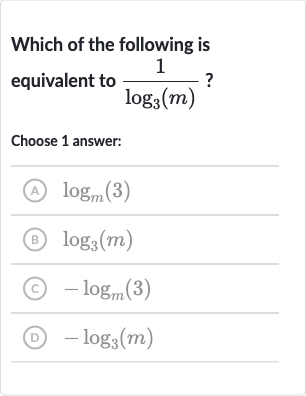Full solution
Q. Which of the following is equivalent to ?Choose answer:(A) (B) (C) (D)
- Recognize relationship between reciprocal and change of base: Recognize the relationship between the reciprocal of a logarithm and the change of base formula.The reciprocal of a logarithm can be expressed using the change of base formula. The change of base formula states that , where and are bases and is the argument of the logarithm.
- Apply change of base formula: Apply the change of base formula to the given expression.We have . According to the change of base formula, this can be rewritten as because .
- Match result with given options: Match the result with the given options.The expression matches with option (A) .
More problems from Product property of logarithms
QuestionGet tutor help
QuestionGet tutor help

